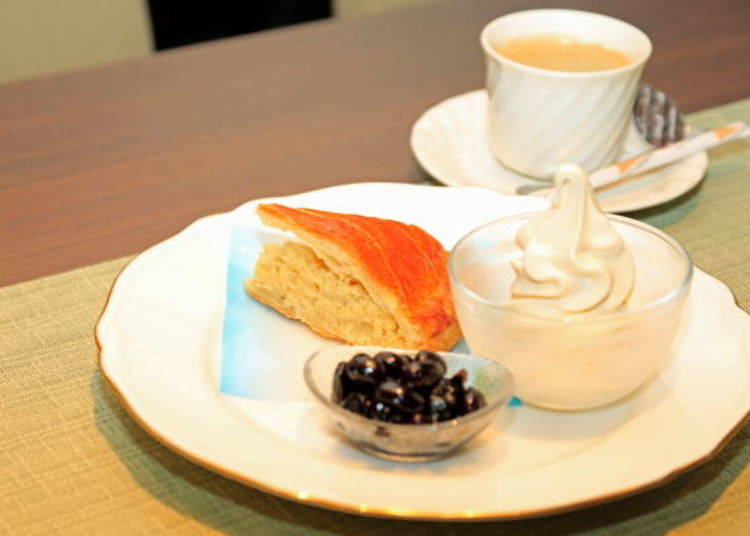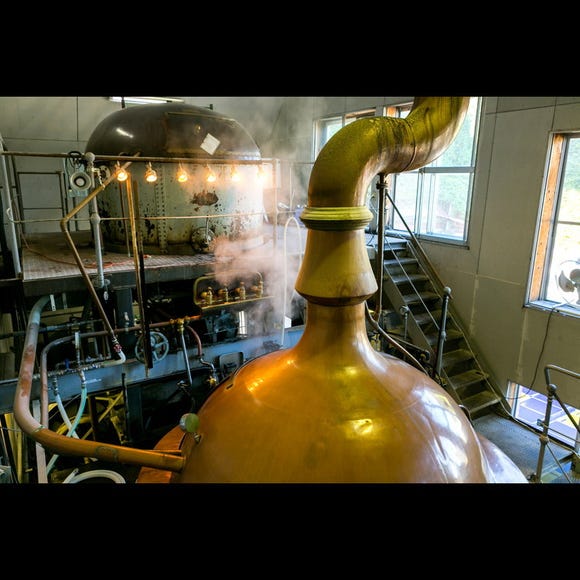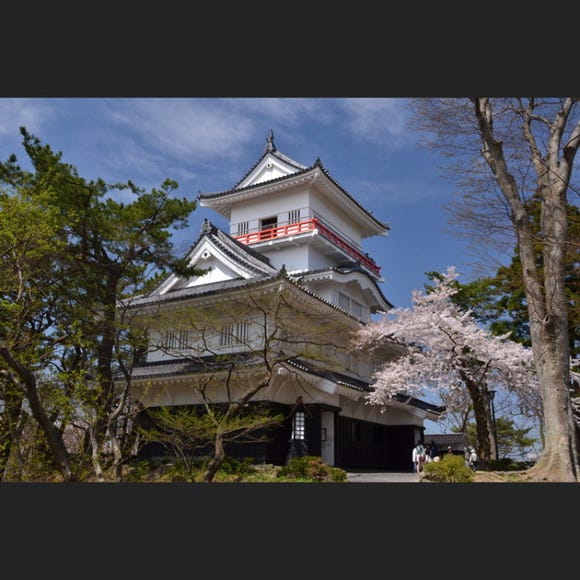
Known as konjac or konnyaku in Japanese, this versatile ingredient is a staple in Yamagata Prefecture’s cuisine. From classics like Tama Konnyaku to innovative sweets, Narageshuku Tanno Konnyaku in Kaminoyama City is redefining how we enjoy this fiber-rich delicacy.

Konjac Desserts & More?! These New Konnyaku Dishes Will Impress!
What comes to mind when you hear of konjac dishes? Oden, nikomi, and so on.
At Narageshuku Tanno Konnyaku, they produce and sell konjac, offer new food products and suggest creative konjac cosine. At Konnyaku Bansho you can enjoy popular dishes such as kaiseki cooking using konjac and Tama Konnyaku. At Hibi Konnyaku you can try unique konjac sweets. We heard that Hibi Konnyaku has unique sweets, so we decided to visit the place.

“We Want People to Visit Yamagata to Eat Konnyaku”
They started selling konjac at Tannko Konnyaku in 1959, during the previous owner’s era. From the current chairman Mr. Masuo Tanno’s age, they started selling “Yamagata Prefecture Specialty Tama Konnyaku” nationwide around 1970. While going around the nation, the thought of “wanting people to visit Yamagata to eat konjac” became more vigorous, and in 1986 they opened up their current store.



Also, Chairman Tanno came up with an amazing performance so visitors can enjoy their meals. He combined various ingredients with konjac to make dishes that look like other dishes such as tuna sashimi, tempura, and yakitori.
These konjac foods made with skillful technique has the texture and flavor of the real dishes. Anyone who tries these dishes are surprised that it is made with konnyaku.


“This is possible because konjac is flavorless, it matches various ingredients, and we can come up with infinite amounts of new ideas.” Chairman Tanno continues to look for ways to surprise his customers.
-
Konnyaku Banshoこんにゃく番所
- Address 608-1 Minazawa Suwamae, Kaimonyama-shi, Yamagata
・Hours: Shopping: 9 AM–5 PM, Dining: 11 AM–4 PM
・Closed: Tuesdays (open if it is a holiday), January 1st
New Konjac Desserts at a Cafe
President Tanno Masahiro told us, “after we opened up a cafe in 2013, we were able to change younger customer’s perception towards konjac. It is disheartening when people dislike konjac even though they haven’t tried it. We have started to offer enjoyable cafe menus using the unique feature of konjac.”

The konjac sweets at the cafe all include specially made konjac by President Tanno. This includes konjac that has texture like jelly, texture like fruits pulp and mellow taste, to replicate the original flavor. You can enjoy authentic sweets without worrying about calories.

The Konnyaku Pie Cake not only looks but tastes like a normal pie cake. You can’t notice the konjac texture at all. The Konnyaku Pie Cake that has the crisp pie crust and mellow sweetness is the most popular sweet on the cafe menu.

The “Kuromame-fu Konnyaku” is like eating sweetly boiled black beans. It’s a sweets that has the soft konjac texture, and once you start you can’t stop.

Another popular dish is the “Konnyaku Mizore - Assorted Fruits,” which includes the “Konnyaku Mizore” with a jelly-like texture. The konjac and ripe pear is very juicy.


“Even though we create various dishes, we continue to provide the original flavor. To preserve and pass down Tama Konnyaku what my father and grandfather have protected, I believe we have to keep innovating new things.” Mr. Masahiro keeps challenging every day with his staff to pass on the legacy.
How to Make Konjac: Use Calcium-Rich Natural Water
To make konjac one thing you need is clean water; it is a major factor that determines the taste. They use spring water that comes from 283 meters under the property. Alkaline natural water is rich in calcium, and it is 18 degrees Celsius throughout the year.

Alkaline Konjac Cleans the Body
Chairman Tanno said “from long ago konjac was called ‘Suna otoshi (sand remover)’ because it helps cleanse your body. Konjac doesn’t have calories and also removes toxins from your body, which has been told in ancient Buddhist teachings around the world. Japanese people eat many grains and have a longer intestine. Since konjac doesn’t digest, when it goes through the body, it cleans the walls of the intestines. It is a necessary food for us.”

With it being so easy to have poor eating habits in modern times, alkaline konjac is a necessity for us.

They suggest fun and enjoyable eating experience while thinking about your health.
-
Hibi Konnyaku日々蒟蒻
- Address 608-1 Minazawa Suwamae, Kaimonyama-shi, Yamagata
・Hours: 9:30 AM–4 PM (Last order at 3:30 PM)
・Closed: Tuesdays (open if it is a holiday), January 1st
Narage Region Retains a 'Shukuba-Cho' Feel
The Kaminoyama Narage Region where Tanno Konnyaku is located was a shukuba-cho (post town) along the Ushu Kaido (Ushu Route) that lead from Shichikashuku Miyagi Prefecture through Kanayama Touge to Kaminoyama. It was designated as a historical national route in 1995, top 100 historical roads in 1996 and a national historic site as Ushu Kaido Naragejuku.
The Daimyo’s procession for alternate attendance, workers, horse, and palanquin would go through Naragejuku. This area had plenty of water suited for oak trees and making konjac, so people traveling thought the area passed on how to harvest konjac.


We strongly recommend enjoying konjac desserts and dishes in the Narage Region where you can still feel the shukuba-cho atmosphere.
*Prices and options mentioned are subject to change.
*Unless stated otherwise, all prices include tax.
Popular Tours & Activitiess
Recommended places for you
-

Baeren Brewery Co., Ltd.
Other Sightseeing
Morioka, Hiraizumi And Hachimantai
-

Asamushi Onsen
Hot Springs (Onsen) & Bath Houses (Sento)
Aomori, Hirosaki And Hachinohe
-

Nikka Whisky Sendai Distillery
Culture Experience
Sendai And Matsushima
-

Senshu Park
Parks
Surrounding Areas Of Akita
-

Aomori Museum of Art
Art Museums
Aomori, Hirosaki And Hachinohe
-

Hachimantai Aspite Line
Landscapes
Morioka, Hiraizumi And Hachimantai
-

Shopping in Akita: 11 Must-Buy Souvenirs & Where to Shop Near the Station and Airport
by: ShiroKu inc.
-

What to Buy in Aomori? 11 Aomori Souvenirs Locals Actually Recommend
by: ShiroKu inc.
-

Dining in Yamagata: Must-Try Foods & Top Restaurants Near the Station
by: ShiroKu inc.
-

Shopping in Niigata: 9 Must-Buy Souvenirs & Local Sake to Take Home
by: ShiroKu inc.
-
Ad

Why Fukushima is the Next Big Food Destination in Japan The Foodie Paradise Only 90 Minutes from Tokyo
-

Smart Ways to Avoid Crowds and Enjoy a Safe, Comfortable Trip to Myoko, Niigata Prefecture.
-
Ad

Japan’s Top Chefs Gather! New Cuisine Showcasing the Charms of Fukushima, a Treasure Trove of Produce
-

We Board Japan's 'Setsugekka' Resort Train And Have An Incredible Journey Through The Heartland
-
Ad

Relax, Take Some Pics, Have Fun! This Winter, Head to Tohoku For Snow And Hot Springs
-
Ad

A 2-Day Winter Itinerary in Yamagata: Snowy Temples, Hot Springs & Local Sake
-

Shirakami-Sanchi Guide: Hiking in Japan's Intense & Untouched Beech Forest (Aomori)
-

Hasshoku Center: Enjoy Famous Seafood Bowls at Aomori's Giant Fish Market













